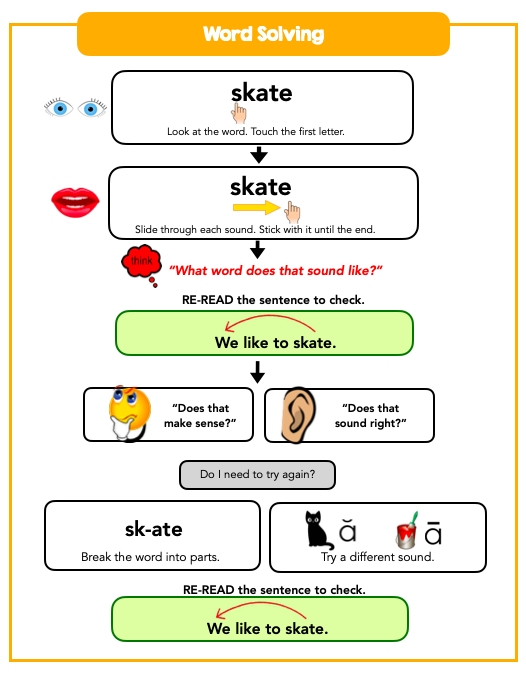Readers use strategies in order to solve words with increasing independence. However, teaching a variety of strategies can leave a student unsure which strategy to use when they encounter an unknown word, or lead them to try multiple strategies that interrupt comprehension.
The sequence of letters in the entire word is the most important information to solve a word! Children use their identification of the letters, alongside an understanding of the sounds they make, plus the skill of blending sounds together to create a pronunciation of the word. Whether the pronunciation is accurate or not, the sound of the word may bring to mind words they know that sounds something like that which also makes sense in the context of what they are have read so far.
Word solving strategies that lead children to look away from the print, such as checking the picture for clues, will not support readers when the text becomes increasingly complex with reduced or absent picture and context clues. Instead, teach developing readers to use strategies that will help them as the text grows in difficulty.
Children need to do the work of examining the letters in a word as the first strategy when they encounter an unknown word. This strategy can be modeled during shared reading and coached during small group or individual reading moments with a teacher.
The word solving strategy below outlines this process for teachers who will be instructing and coaching readers. It may become a visual complement while teaching readers to start with the letter and sounds during shared and coached reading.
Download a PDF version here: Word Solving Strategy.pdf

